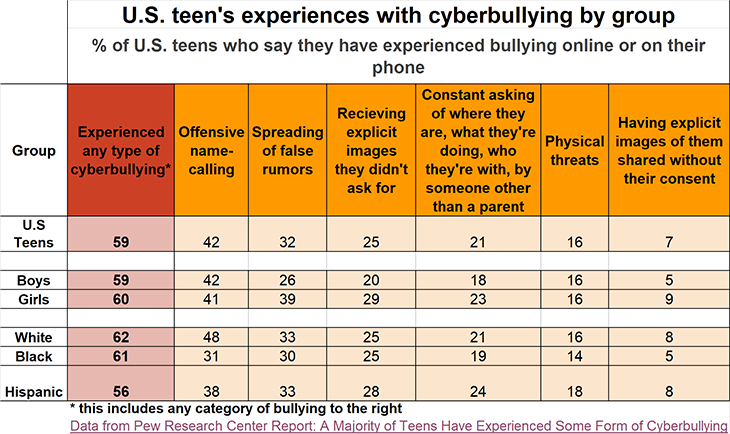Analyze This: Most teens have been cyberbullied
Survey tallies the types of bullying kids deal with online and on their phones

Most teens report being cyberbullied. This kind of bullying can feel inescapable.
AntonioGuillem/iStock/Getty Images Plus
Today’s teens, like most people, connect digitally. And they tend to stay connected to one another 24/7 through their phones, computers and tablets. But that constant connection isn’t always likes and hearts.
More than half of U.S. teens in a recent survey reported being cyberbullied. The Pew Research Center in Washington, D.C., conducted the survey. This Center is a nonpartisan “fact tank,” or group that collects data and attempts to avoid political bias when explaining the data it assembles. The Pew center’s new survey asked teens about how they were bullied online and on their phones.
The survey looked at six types of cyberbullying. Two types involved explicit images — pictures that most teens would not want to show their parent or guardian (like a photo of a naked person). The most common type of cyberbullying reported was offensive name-calling.

Bullying of any type, cyber or otherwise, can affect health, both immediately and long-term. That’s according to the Centers for Disease Control and Prevention (CDC).
Because cyberbullies can follow teens wherever they are at any time of day — and can spread quickly through social networks — this type of abuse can give teens the feeling they have no safe place to escape it.
But there are things teens can do to protect themselves and others from cyberbullying. Here are some good starting guidelines. Don’t share passwords, private information or photos that you wouldn’t want everyone to be able to see. Don’t post impulsively when angry, sad or upset. Don’t participate in bullying you see online.
If cyberbullying happens to you, tell a trusted adult. Make sure to save all emails, messages and screenshots of the bullying. And always report the bullying to the social-media site or app on which the bullying takes place.
PACER’s National Bullying Prevention Center/YouTube
Data Dive:
1. Which bullying was the second most common type experienced by all teens?
2. Which group experienced the largest number of physical threats online?
3. How much more likely were girls than boys to have experienced the speading of false rumors?
4. How much more likely were Hispanic teens to receive explicit images than white or black teens?
Beyond the Data:
5. The data breaks groups down into white, black and Hispanic teens. Are there ethnic groups missing from these data? If so, which are they? How might this influence conclusions drawn from the data?
6. The researchers in this survey used three separate categories for race: white, black, and Hispanic. This meant that all Hispanics, white or black, went into the same group. How might this have affected the data?
7. What might happen to the data when someone falls into more than one group?
8. What do you think the limitations of these data are? How would you try to work around that problem?
Analyze This! explores science through data, graphs, visualizations and more. Have a comment or a suggestion for a future post? Send an email to sns@sciencenews.org.







